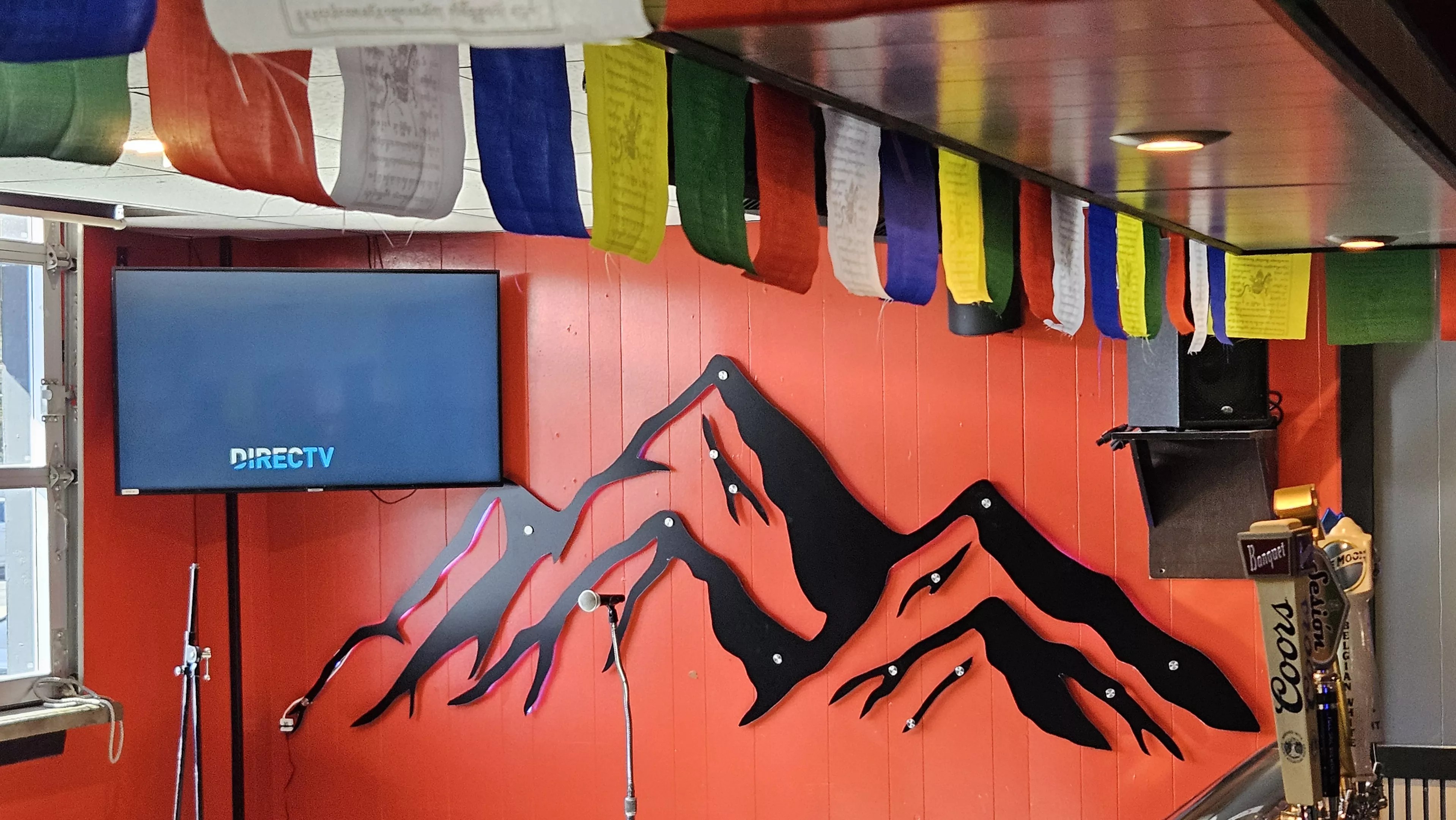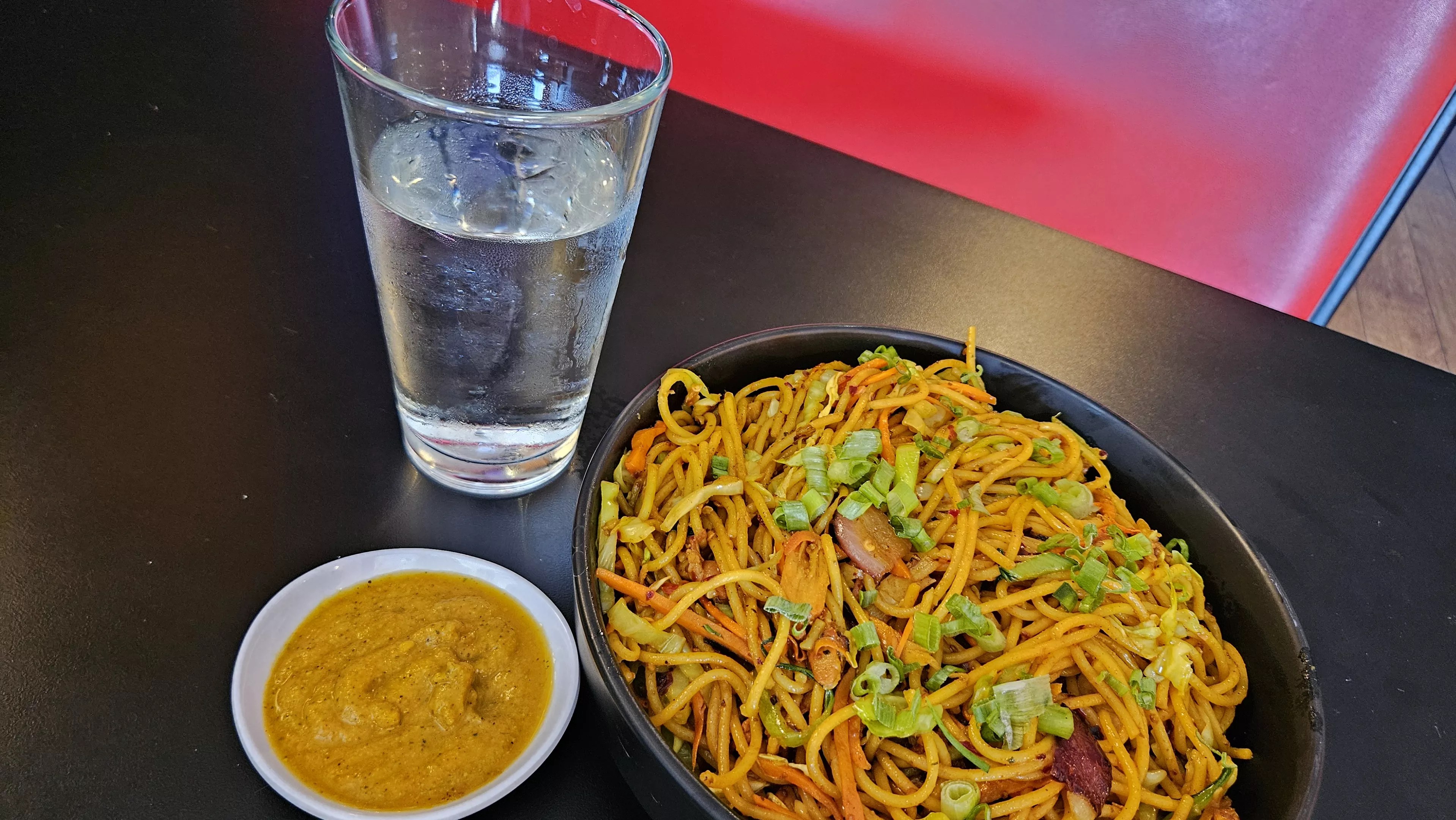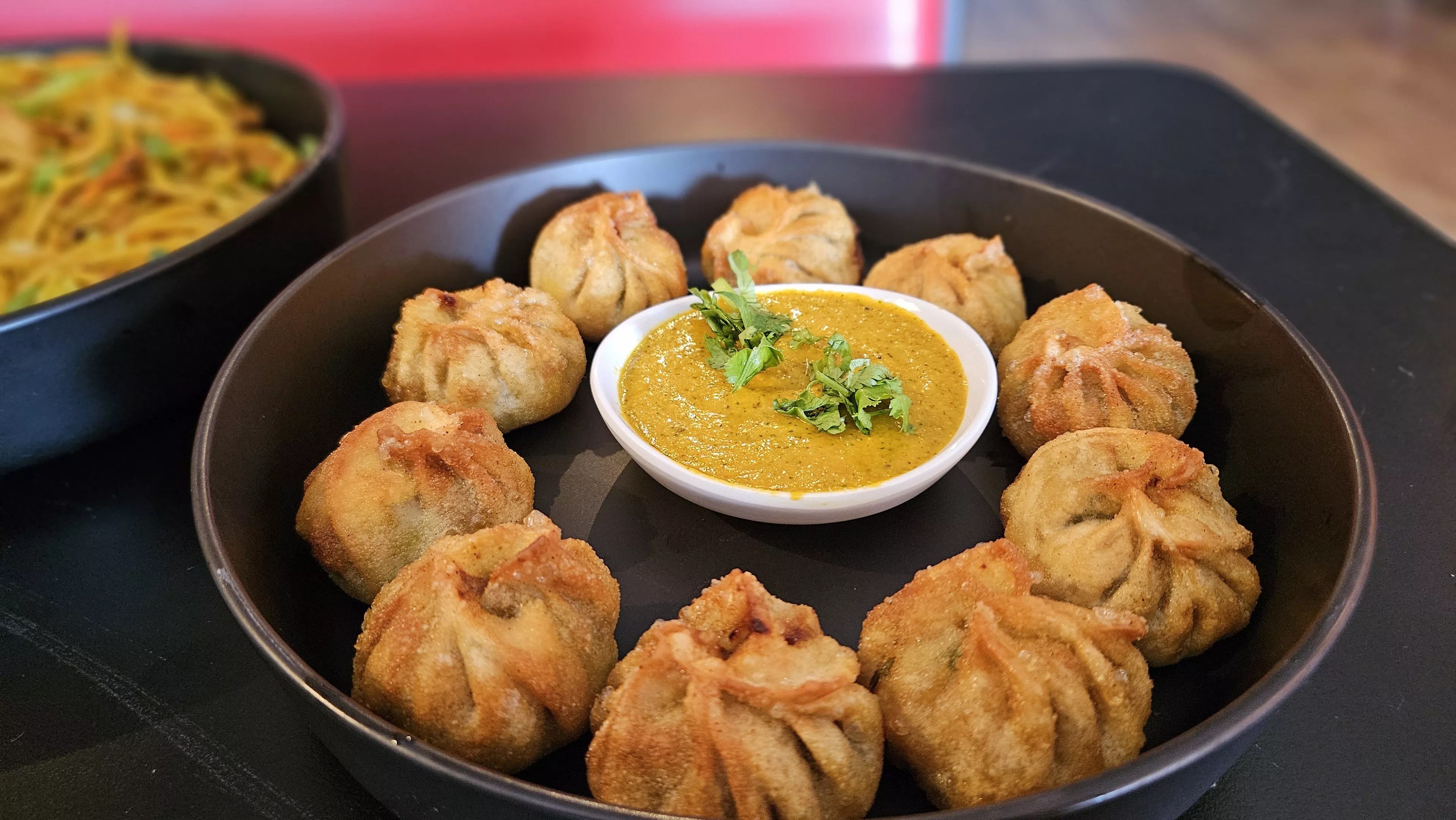
Gil Asakawa

Audio By Carbonatix
The dining room is almost empty, but then, Vintage Himalayan Bar & Restaurant just opened and doesn’t yet have its liquor license. Co-owner Kaushal Dahal is optimistic that once it’s approved, Vintage Himalayan will be filled with raucous diners – and drinkers. That’s because the restaurant is located in a building on South Broadway that had been home to Gennaro’s Cafe Italiano since 1951; the exterior still bears the name of that place.
The sign is the reason why Himalayan has “Vintage” in its name, and proudly so. “It has a huge history,” Dahal says of the location. “Everybody from generation to generation knows it. It is a monument in the neighborhood, right? Keeping it is the biggest honor. We want to be recognized as the restaurant in the Gennaro’s building.”
When the license is approved – “We should have received it yesterday, because last week they gave us a week timeline,” Dahal says – he expects former Gennaro’s regulars to hang out at around the enormous bar in the front room. “This is one of the biggest bars on South Broadway,” he notes.

The bar inside Vintage Himalayan Bar & Restaurant.
Gil Asakawa
Denver, make your New Year’s Resolution Count!
We’re $17,500 away from our End-of-Year campaign goal, with just a five days left! We’re ready to deliver — but we need the resources to do it right. If Westword matters to you, please contribute today to help us expand our current events coverage when it’s needed most.
But they won’t be washing down spaghetti with their drinks. “It’s basically fusion food,” Dahal says of the Vintage Himalyan menu. “So we’ll have a wide variety of Nepali, Indian, Himalayan and also American food.” And once the spirits are flowing, the restaurant will launch its bar menu, with “American” classics like burgers and wings – but no Italian.
Above all, Vintage Himalayan is about Nepali specialties – and that cuisine seems to be catching on. A few months ago, Mantra Cafe opened on Broadway in the Golden Triangle; it describes its food as a “fusion of Nepali and Indian flavors.” Other restaurants that put Nepali first have been around longer, including Nepali Spice in Aurora, Gundruk in Lafayette and Rocky Mountain Momo in Englewood (gundruk is a leafy green that’s used in Nepali cooking, and momo are traditional Nepalese dumplings). Now Vintage Himalayan has signed on.
It used to be that Americans thought of all Indian food as one spicy, delicious blur of dishes, from curry to chicken tikka masala. It didn’t really matter that curry had been around for centuries before British colonizers took a liking to it and created a dried curry mix to make it in England, or that chicken tikka masala, one of the best-known “Indian” dishes in this country, was created for palates in the U.K.

A mural evoked the famous mountains inside Vintage Himalayan Bar & Restaurant.
Gil Asakawa
But then, India is the most populous country in the world. In 2023, India’s population surpassed that of China, with almost 1.5 billion people. Meanwhile, a recent study by the World Population Review found that .11 percent of Colorado’s population is Nepalese – just 6,245 people.
In the past, if an immigrant from Nepal opened a restaurant here, it would likely be billed as an Indian restaurant, with maybe a footnote on the sign that mentioned “Nepalese.” Today, there are 139 Indian restaurants listed in the area on Yelp, but as “Nepalese” cuisine becomes more known, many are mentioning Nepal next to India for their menu choices.
When the Colorado Health Institute’s 2024 Colorado Lotus Project studied the local Asian American Native Hawaiian Pacific Islander community, it found that of eighteen Asian ethnic communities, five of the top six ethnicities that have lived in Colorado less than ten years were from South Asia: the Bhutanese, Nepalese, Pakistani, Bangladeshi and Indian population. That could explain why the Nepalese voice is gaining ground in the food scene, and why so many members of the Nepali community have chosen to educate local diners about the difference between their culinary culture and that of the subcontinent of India.
Binisha Shrestha, a Nepali community leader, has seen this evolution up close, and is helping Nepalese immigrants embrace their identity by working with local cultural institutions. Earlier this year, she persuaded the Aurora History Museum to host a beautiful exhibit of photographs, Confluence of Festivals: Temple Town to the World, by Nepali photographer Youbesh Dhaubhadel. That was a companion to another gallery exhibit she curated, Mosaic of Cultures: Aurora’s Nepali Community, which shed light on the local Nepali community with a timeline and glimpses of local businesses, including restaurants. She also curated an exhibit of art by local and national Nepalese artists at the Aurora Public Library.

Binisha Shrestha shows the Nepali artwork she curated for the Aurora Public Library.
Gil Asakawa
“I think I have been living here twelve years now, and earlier than that there were Nepali restaurants,” Shrestha recalls. “But due to the majority – I mean, the Indian population is more than the Nepali population -that’s why even though many in the Nepali community own restaurants, in order to promote them, they would call it Indian and Nepali.”
But that’s been turned around by the new generation of eateries that put Nepal first and de-emphasize India, even if they actually still serve more Indian dishes than Nepali in order to bring in customers.
“In a couple of years, the Nepali community has been increasing comparatively,” Shrestha adds. “With income, in comparison with Bangladeshi communities, the Pakistani communities, Sri Lankans, the majority of the population is slightly higher in the Nepali side, rather than the other communities.”
The Nepali identification has also been helped by the arrival of other ethnic communities, she points out, like the Bhutanese refugee community: “I think because Bhutanese refugees are basically Nepali speakers; I guess they are politically from Bhutan, but they speak Nepali. They have Nepali names, cultures. Everything is Nepali. So that might have added.”
She also notes that Tibetans connected to Nepali culture have been settling in Boulder County for decades, attracted by Colorado’s mountain culture and embrace of Buddhist and Hindu spirituality. “There’s a mixture of both Tibetan culture and Sherpa culture,” Shestha says. “I mean, they align together and celebrate the same festivals. Even the costumes are almost the same, just with the jewelry difference.”
A part of Boulder even mimics an area of Nepal. “It was very popular during the hippie era,” she says, and a pleasant surprise when she moved here from Virginia fifteen years ago.
“I think Americans in general have very little understanding exactly of how diverse the world is,” Shrestha adds. “I literally met so many people who hadn’t heard of Nepal before. They would ask. ‘Where are you from?’ I would say, Nepal. They hadn’t heard and I had to tell them that Nepal is a small country in between the giants India and China. I had to tell them, literally, so many times, so many times.”

Chow Mein is a common dish in Nepal because it’s been influenced by its proximity to China and Mongolia.
Gil Asakawa
Colorado provides a welcome contrast. “Compared to that, Denver is much more sophisticated, and Aurora certainly is too, because it’s so diverse,” she says.
Shrestha hasn’t yet tried Vintage Himalayan Bar and Restaurant. When she does, she may find diners eager to have their familiar, stew-like curry, vindaloo or korma – skipping the lesser-known Indian meals like chlli karahi (curry cooked in a wok with chillies) or rogan josh (a slow-cooked curry with Kashmiri spices) and overlooking the short list of Nepali specialities altogether.
But the dishes on that page of the menu are definitely worth trying: chow mein (yes, the Chinese dish, but not really, because it’s made with Nepali spices, more heat and different veggies), mustang allo (potatoes sauteed with garlic and herbs and tossed with timur, Nepali sichuan peppers), or the momos: chicken, vegetable or chili (tossed with chili sauce, peppers and onions), ordered steamed or fried for a satisfying crunch.

Crispy Fried Chicken Momos at Vintage Himalayan Bar & Restaurant.
Gil Asakawa
Learning to appreciate other culinary cultures can be an uphill climb, but Vintage Himalayan Bar and Restaurant is worth the challenge.
Vintage Himalayan Bar and Restaurant is at 2598 South Broadway, and is open Sunday, Monday, Wednesday and Thursday 11 a.m.-10 p.m. and Friday and Saturday 11 a.m.-midnight. The website is at vintage-himalyanfood.com.